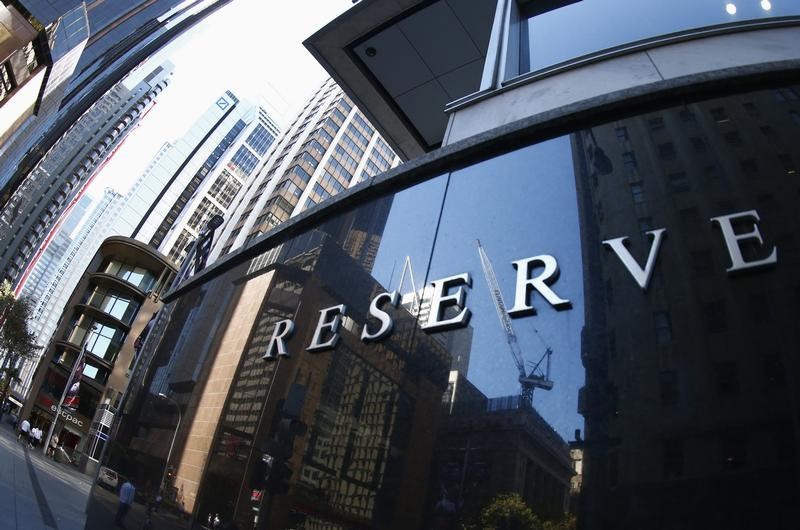(Bloomberg) -- Australia’s central bank said a weaker currency is likely helping economic growth, while reinforcing its message that interest rates will remain unchanged, according to minutes of its October policy meeting released in Sydney Tuesday.
Main Takeaways
- Next move in cash rate “more likely to be an increase” but, given only gradual progress on unemployment and inflation, there’s “no strong case” for a near-term adjustment
- Sees solid GDP growth in third quarter, but expects it “to have moderated a little” from strength in first half
- Highlighted fall in spare capacity in labor market, lower youth unemployment and decline in rate for those unemployed for up to a year
- Notes declines in Sydney and Melbourne house prices “had become more widespread” in both cities
- Uncertainty over how consumption will respond to prolonged low-income growth and/or declining house prices
- Liaison with retailers continued to point “to below- average growth” in nominal retail spending
State of Play
The Reserve Bank of Australia remains in a holding pattern as its record-low cash rate strengthens economic growth and boosts hiring -- but fails to ignite the inflation that would underpin tighter policy. A weaker currency would aid that task and in the meantime it’s talking up the outlook and betting that falling unemployment will eventually drive wages higher. The central bank is also closely watching a fall in property prices for signs of any impact on household spending.
Key Quotes
- Data suggest “that employment growth would exceed population growth in coming months, which was expected to result in a further gradual absorption of spare capacity in the labor market”
- On the strengthening greenback, “the resultant modest depreciation of the Australian dollar was likely to have been helpful for domestic economic growth”
- “Recorded household income growth had been subdued and this continued to be an important source of uncertainty for the outlook for consumption and inflation”
- “Members assessed that it would be appropriate to hold the cash rate steady and for the bank to be a source of stability and confidence”
